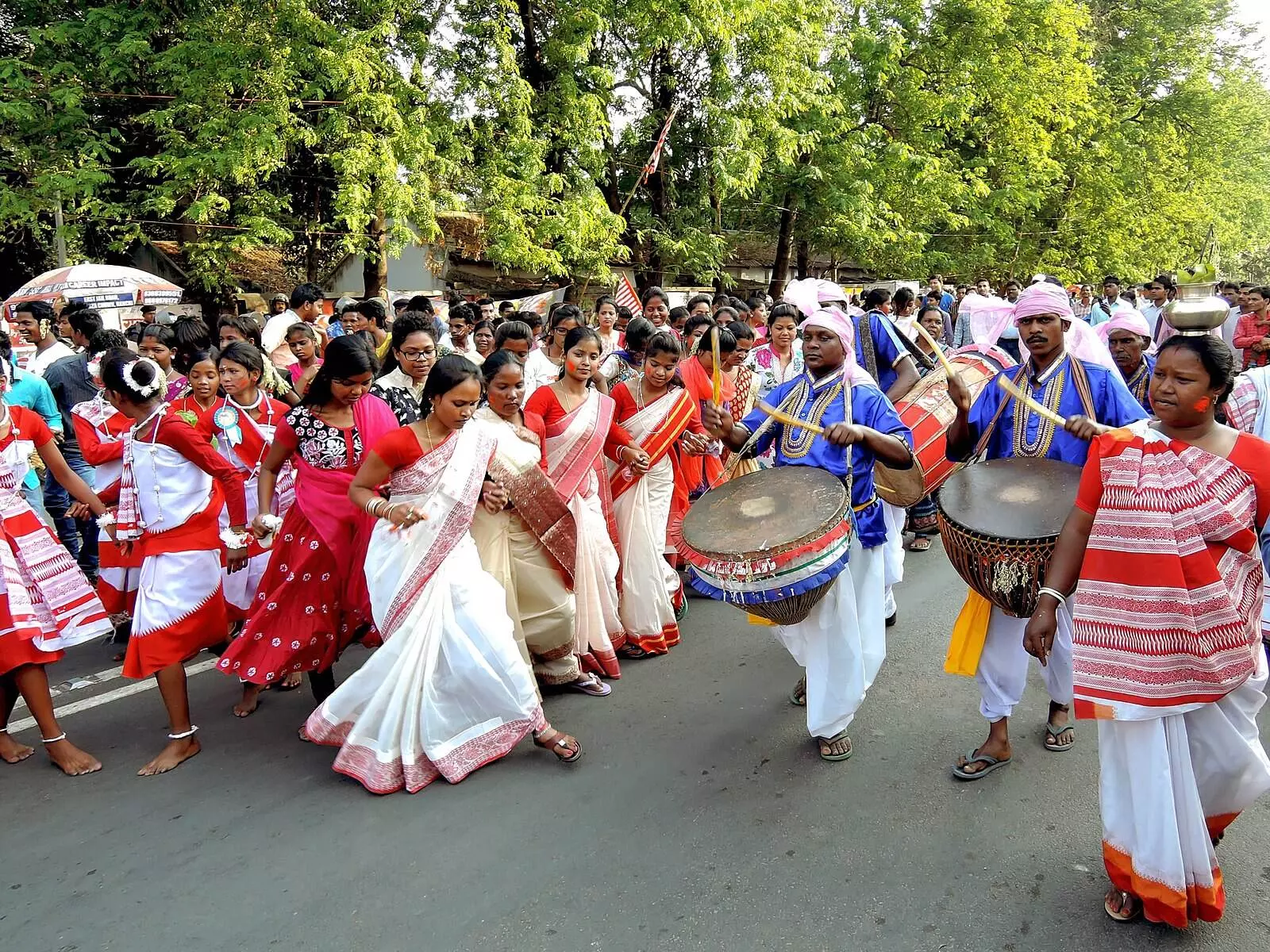Tribal communities celebrate Sarhul, their new year, by worshipping the Sal tree
Sarhul, which means worshipping of the Sal tree, is the main festival of the tribal population of Jharkhand. The festival, which redefines worship of nature, is being celebrated with fanfare galore after a gap of two years due to COVID19. Details here.
 गाँव कनेक्शन 4 April 2022 7:14 AM GMT
गाँव कनेक्शन 4 April 2022 7:14 AM GMT

Photo: WikiCommons/Gurpreet Singh
Tribal communities in Jharkhand are celebrating the Sarhul festival today, which is their new year. This festival commences on the third day of Chaitra (the first month of the Hindu calendar) month and involves three days of festivities relating to the worship of the sal tree. The sal tree is believed to be the abode of Goddess Sarna who protects the village from all kinds of natural calamities and disasters.
The Sal tree is also called Jaher which means the sacred grove and the festival takes place when the tree gets new leaves and flowers. 'Sar' refers to year and 'Hul' means set to begin.
Sarhul is one of the most popular festivals of Jharkhand that commemorate the beginning of the year. It is celebrated by various tribal communities such as Oraon, Munda and Ho that observe the festival by thanking nature for providing them with shelter, livelihood, food and drink.
The local people also worship Sita, the wife of Lord Ram, as Dhartimata.
जोहार!आप सबों को प्रकृति पर्व सरहुल की हार्दिक शुभकामनाएं। pic.twitter.com/Bl46Y0FCHG
— Arjun Munda (@MundaArjun) April 4, 2022
Sarhul celebrations
All the rituals are organised under the Sal tree and the offerings to Lord Dharmesh, also known as Mahadeo, who is believed to be the controller of the universe. The offerings include fruits, flowers, and animals that are white in colour. Sal trees and other sacred trees are also planted at the site which is reserved for religious and social occasions.
The village priest called Pahan fasts for a couple of days during the time of the festival. Traditional drums like dhol, nagara, and turhi are played by the locals as Pahan chants prayers to deities.
Also Read: Uttarakhand's Harela festival celebrates biodiversity, nature conservation and the monsoon
The main attraction of Sarhul is Baa Porob wherein the men and women of the Sarna tribe wear colourful and traditional dresses to perform the traditional dance. Men and women are dressed in combinations of white and red. Women wrap a white saree with a red border whereas men wear white dhoti with a red border, a white sleeveless vest and a white turban on their head.
ᱡᱚᱦᱟᱨ ᱟᱨ ᱥᱟᱶᱛᱮ "ᱥᱟ.ᱜᱩᱱ ᱥᱟᱨᱦᱩᱞ ᱯᱟᱨᱟᱵᱽ"
— Hemant Soren (@HemantSorenJMM) April 4, 2022
साबिन को "सगुन सरहुल पोरोब" रेय: जोहार
सगुन सरहुल पर्व की ढेर सारी शुभकामनाएं और जोहार#प्रकृतिपर्व #सरहुल #Sarhul pic.twitter.com/84yLlOHjM2
Women accessorise their look with earrings, anklets, wristbands and necklaces and their hair is nicely tied up into a bun with flowers tucked in it. The tribes also drink Handia or diang – a mixture of rice, water and tree leaves which is served in cups made of dried leaves.
The Pahan also distributes shagun paani and sarna flowers to mark brotherhood.
As per news reports, this year Jharkhand administration has barred children and elderly from participating in the processions that are taken out during the festivals.
A government order reportedly said that each procession shouldn't have more than 100 people, and in case of convergence of processions at a place, the total number of participants shouldn't exceed 1,000 people. Additionally, it was reported that the processions should conclude by six in the evening and pre-recorded music shouldn't be played after that.
sarhul #Jharkhand tribal population nature festival #story
More Stories




